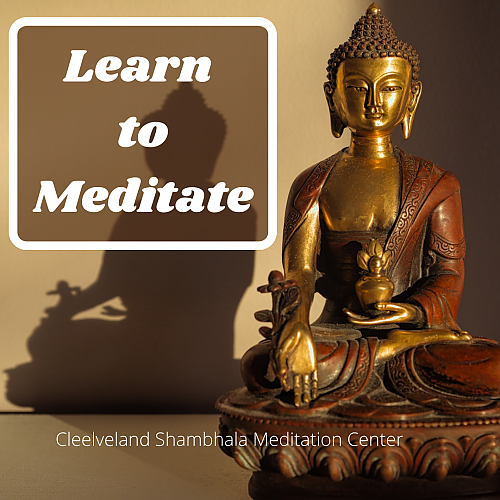Learn to Meditate
Our minds usually jump wildly from thought to thought. For example, we replay the past and we fantasize about the future. Therefore, in meditation, we take an upright posture, place our mind on an object, and keep it there (be in the moment). In shamatha meditation, the object is the simple act of breathing. The breath represents being alive in the immediacy of the moment.
Please remember, free in-person instruction is available and recommended during Open Sitting Meditation or by appointment. See our Center Hours for the next scheduled session.
Meditation in 3 steps.
1Sit (comfortably)
Details
- Take a balanced, grounded posture to allow the energy in the center of your body to move freely.
- If you’re on a cushion, sit with your legs loosely crossed.
- If you’re in a chair, keep your legs uncrossed and your feet flat on the floor.
- Let your body settle around your erect spine.
- Imagine that a string attached to the top of your head is pulling you upright.
- Place your hands on your thighs, in a place not so far forward that it begins to pull your shoulders down, nor so far back that the shoulders contract and pinch the spine.
- The fingers are close and relaxed—not spread out in a grip, as if you can’t let yourself go.
- Tuck your chin in and relax your jaw.
- The tongue is also relaxed, resting against your upper teeth.
- Your mouth is ever so slightly open.
- Your gaze is downward, with the eyelids almost half shut.
- The eyes aren’t looking; the eyes just see.
- It is the same with sound—we aren’t listening, but we do hear. In other words, we’re not focusing on our senses.
2Breathe normally and focus on the breath
Details
- The basic technique is that we begin to notice our breath.
- The breath is what we’re using as the basis of our mindfulness technique; it brings us back to the moment, back to the present situation. The breath is something that is constant.
- Using the breathing as the object of meditation is especially good for calming a busy mind. The steady flow of the breath soothes the mind and allows for steadiness and relaxation. This is ordinary breathing; nothing is exaggerated.
- One simple technique is to count the in-and out-cycles of breathing from one to twenty-one. We breathe in, and then out—one. In and then out—two.
- Place your mind on the breathing and count each cycle of breath. You can drop the counting when your mind is settled.
3Return to the breath
Details
- When your focus is wavering, check your posture. Bring yourself back to the upright position. Imagine the string pulling your spine up straight and relax your body around it.
- Slouching impairs your breathing, which directly affects the mind. Therefore, if you slump, you’ll be struggling with your body at the same time that you’re trying to train your mind. In the end, what you want to be doing is the opposite: synchronizing your body and mind.
- As you focus on the breath, you’ll notice that various thoughts and emotions arise. Thus, when this happens, acknowledge that you are thinking and return your focus to the breath.
- In focusing you are bringing yourself back to attention.
- You are centering yourself in your mind and placing that mind on the breath.
- You are slowly settling.
- You’re gradually slowing the mind.
- In focusing you are bringing yourself back to attention.
- When you first begin to meditate, the movement of thoughts may feel like a rushing waterfall. You will find as you continue to apply the technique of recognizing thoughts and returning your focus to the breath, the torrent slows down to a river, then to a meandering stream, which eventually flows into a deep, calm ocean.


